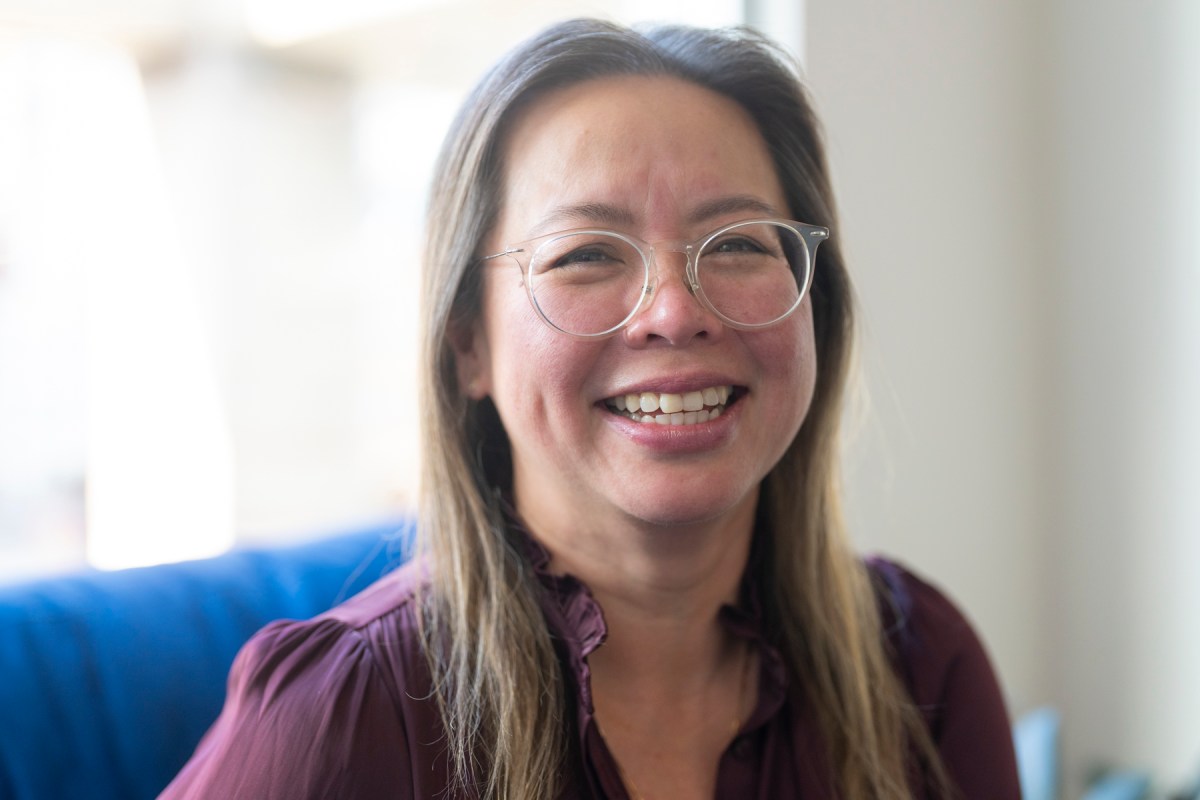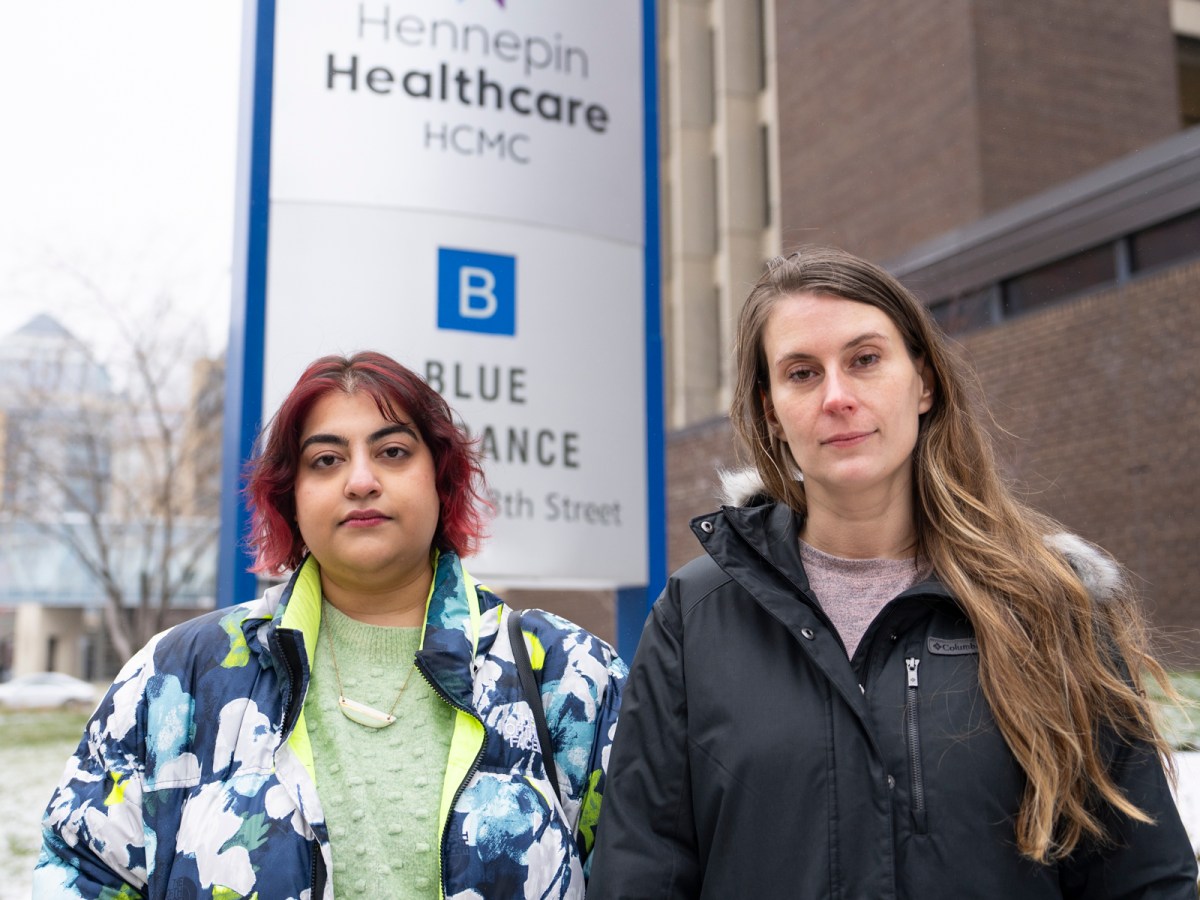For the past six years, Abby Gelineau has spent her workdays collecting data for scientific studies at the University of Minnesota School of Public Health. Gelineau, a graduate student pursuing a degree in public health nutrition, said she delights in welcoming new participants and “getting them excited about science.”
The primary study she works on, part of the nationwide Environmental Influences on Child Health Outcomes (ECHO) Program, is following over 100,000 children at research sites across the country. The goal: to find out what environmental factors are impacting child development.
But as a Korean American and a new mom, Gelineau has noted that the study lacked diversity—especially participation from Asian Americans.
That’s about to change: University of Minnesota associate professor Dr. Ruby Nguyen, Ph.D., recently won a $13.6 million grant to add a cohort to the ECHO study of 780 pregnant Asian Americans from the Twin Cities metro area.
“We saw a gap and a need and now we’re actively working to fill it,” Gelineau said.
Nguyen, the principal investigator at the Twin Cities site, notes that this lack of representation is a pattern. Decades of environmental maternal health studies have failed to include enough Asian participants to match the composition of the U.S. population.
“What we’ve been seeing across the board is that there’s an underrepresentation of Asians in large national studies that are intended to represent multiple races and multiple people,” she said.
Historically, a number of barriers—including language and a distrust of Western medicine—have kept Asian Americans from joining health studies. As a result, so few Asians have participated that researchers rarely include the category in their grant requests.
“You’d see outcomes like rates of cancer or heart disease and not see an Asian category depicted,” Nguyen said. “Asians make up 6 percent of the U.S. population. It’s an incomplete story.”
Nguyen’s research focuses on reproductive health, including problems with conception and pregnancy such as birth defects and growth and development. After studying at Johns Hopkins and training in environmental health sciences at the National Institutes of Health, Nguyen wanted to return home to Minnesota in order to serve the Asian communities she was raised in. She joined the faculty in the Division of Epidemiology and Community Health at the University of Minnesota in 2007.
Nguyen’s new grant from the National Institutes of Health represents a shift toward funding more inclusive research. Eventually, Nguyen said, that should translate into a better understanding of health concerns in specific communities—and better care for patients.
For example, Nguyen’s research team has contributed to the ECHO study with an examination of phthalates found in pregnant women. Everyday products such as soaps and shampoos contain the chemicals, which manufacturers use to strengthen plastics. The study results suggest that boys born to moms with higher levels of the chemicals are more likely to exhibit genital abnormalities and language delays. The researchers also suspect these boys are likely to face neurodevelopmental, lung, and reproductive issues.
Other studies (by different research teams) have found high phthalate exposure in Hmong women in Green Bay, Wisconsin, and more PFAS, the toxic “forever chemicals,” in Asian American people. Phthalate exposure is also more prevalent in low-income neighborhoods, where many Southeast Asian Minnesotans live.
Nguyen expects to find similar gender-based outcomes in the latest Asian cohort, but at a higher rate.
Nguyen has connected with other researchers across the country who are aiding in the effort to increase representation of Asian Americans in health studies. Collecting data is the first step toward identifying disparities, the researchers agree. Dr. Qi Zhao, for example, is the principal investigator at another ECHO site, at the University of Tennessee.
“We don’t realize the health burden without the data,” Zhao said.
Different communities, different outcomes
Other studies that have incorporated data from Asian American participants have shown how the medical community can use research to provide better guidance to patients. One ongoing study is following more than 900 South Asians in Chicago and the San Francisco Bay Area. Researchers have found that participants developed risks associated with cardiovascular disease and diabetes at lower body weights than other racial and ethnic groups.
In response, medical groups updated cholesterol guidelines to make it easier for South Asians to get medications such as statins. The researchers also found that the previously accepted body-mass-index cutoff to screen for diabetes missed about a third of South Asians with diabetes.
In another instance, a 2020 study co-authored by Dr. Rupa Basu, chief of Air and Climate Epidemiology Section at the California EPA, showed that Asians and other minority groups are at a higher risk for preterm delivery due to heat exposure and air pollution in the U.S. That could help doctors decide what sorts of precautions Asian people should take during pregnancy.
“So many health effects are preventable,” Basu said. “When you know who’s at high risk, or the doctor has information on who’s at higher risk for adverse health outcomes, patients can get proper care.”
In the case of Nguyen’s work on phthalates, public health campaigns might help limit exposure to the chemicals.
“We believe we can intervene,” Nguyen said. People are usually exposed to phthalates through plastic and personal care products. “So we can do education about reducing exposure from plastics, even including things like fast food plastic liners.”
Still, progress is slow — decades behind research involving mostly white participants, Basu said. To get broad datasets including Asian Americans is still challenging in 2023, she said. “I know it’s changing slowly. I’m included in that Asian group, and I feel like it’s about time.”
The next step, she said, will be uncovering the reasons behind higher health risks in Asian communities. In the case of cardiovascular disease and cholesterol in South Asian communities, for example, researchers are examining a variety of potential issues — including psychological factors, cultural practices, and dietary habits.
Disaggregating data: Different Asian American communities experience different challenges
Simply adding more study participants from a certain demographic doesn’t solve all of the problems with health population studies. Oftentimes, researchers lump Asians into one category. That poses problems, since health outcomes may differ vastly by specific ethnicity and community.
“When we don’t disaggregate the data, there are concerns about masking some of the bigger populations of Minnesota,” said Nguyen. To come to the right conclusions, she added, you need to look at specific communities within larger racial groups.
In Minnesota, Southeast Asian families face very different health concerns than families from India, for example. Some new research of Nguyen’s currently under review for publication shows that Southeast Asian families are more likely to live with an alcoholic, witness domestic violence, and sometimes experience violence themselves. Asian Indians were less likely to report these adverse childhood experiences.
“We have misleading conclusions when we only include one category of Asians,” Nguyen said. “It feeds into the model minority myth, if we believe that all Asians have higher than average incomes and very few poor outcomes related to being Asian. It fits into stereotypes that Asians are similar to whites.”
And it prompts doctors and researchers to focus on the wrong outcomes, she said. Some of the top health concerns among Hmong people — substance abuse, mental health issues, and domestic abuse — have often been overlooked, she said, while doctors concentrated on physical health.
Recently, there has been a push to disaggregate data at both the state and national level. Minnesota Department of Health commissioner Brooke Cunningham and White House officials have both pledged to put more effort into breaking down data into more specific categories. That could go beyond racial and ethnic groups, Nguyen said. It would also be helpful, she said, to track details like immigrant and refugee status, and where people live. The more specific the data, the more it can tell a complete story.
Zhao, the researcher in Tennessee, said that the data gathered from Nguyen’s new cohort could help future studies as well, since researchers often use data from these huge population studies for years. Zhao may look to this Asian American study to tackle issues she hasn’t even thought of yet, she said.
Nguyen and her team are looking forward to enrolling the first participants in the new cohort next month.






